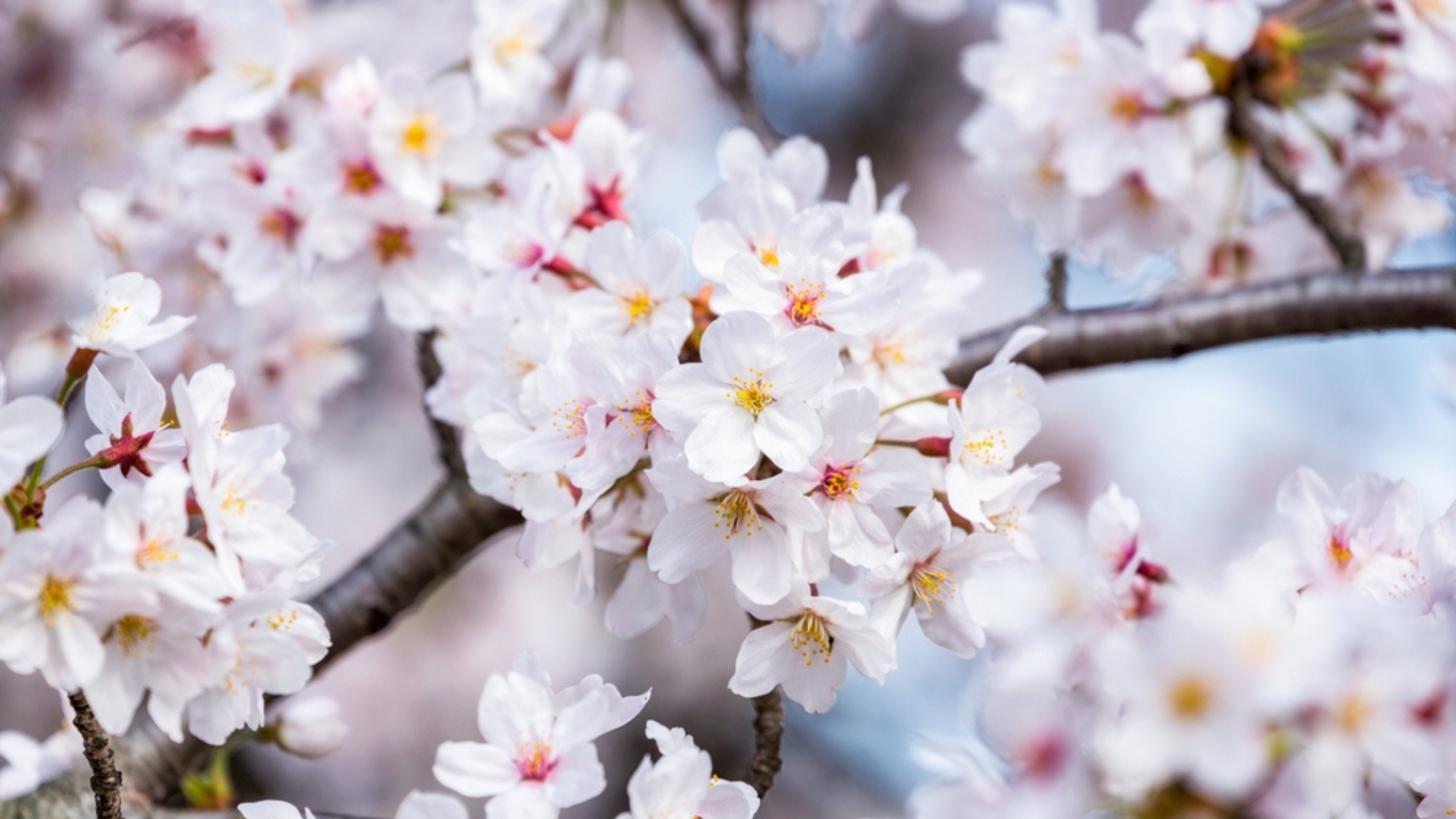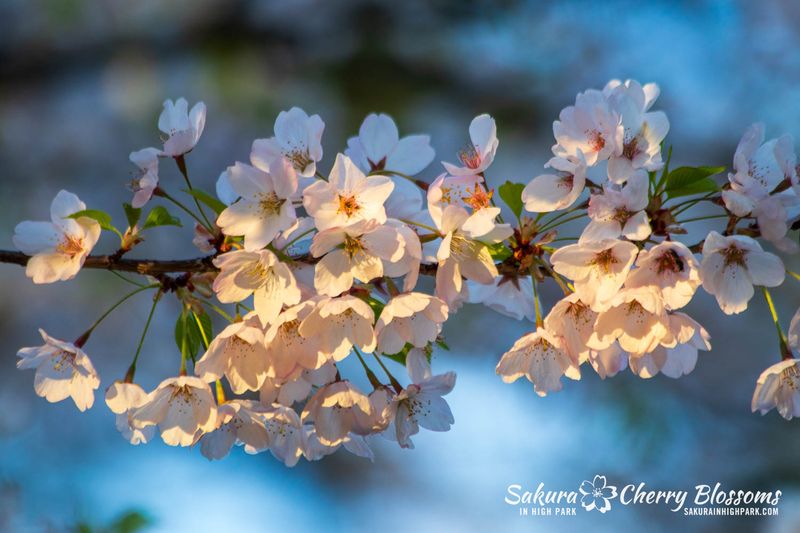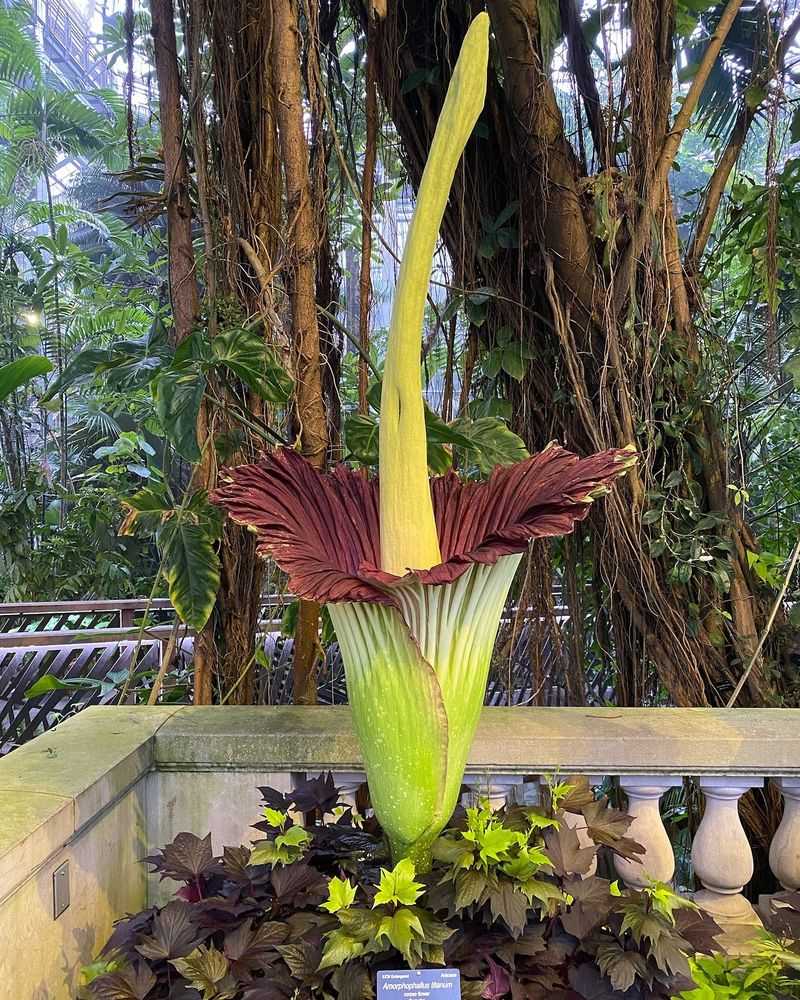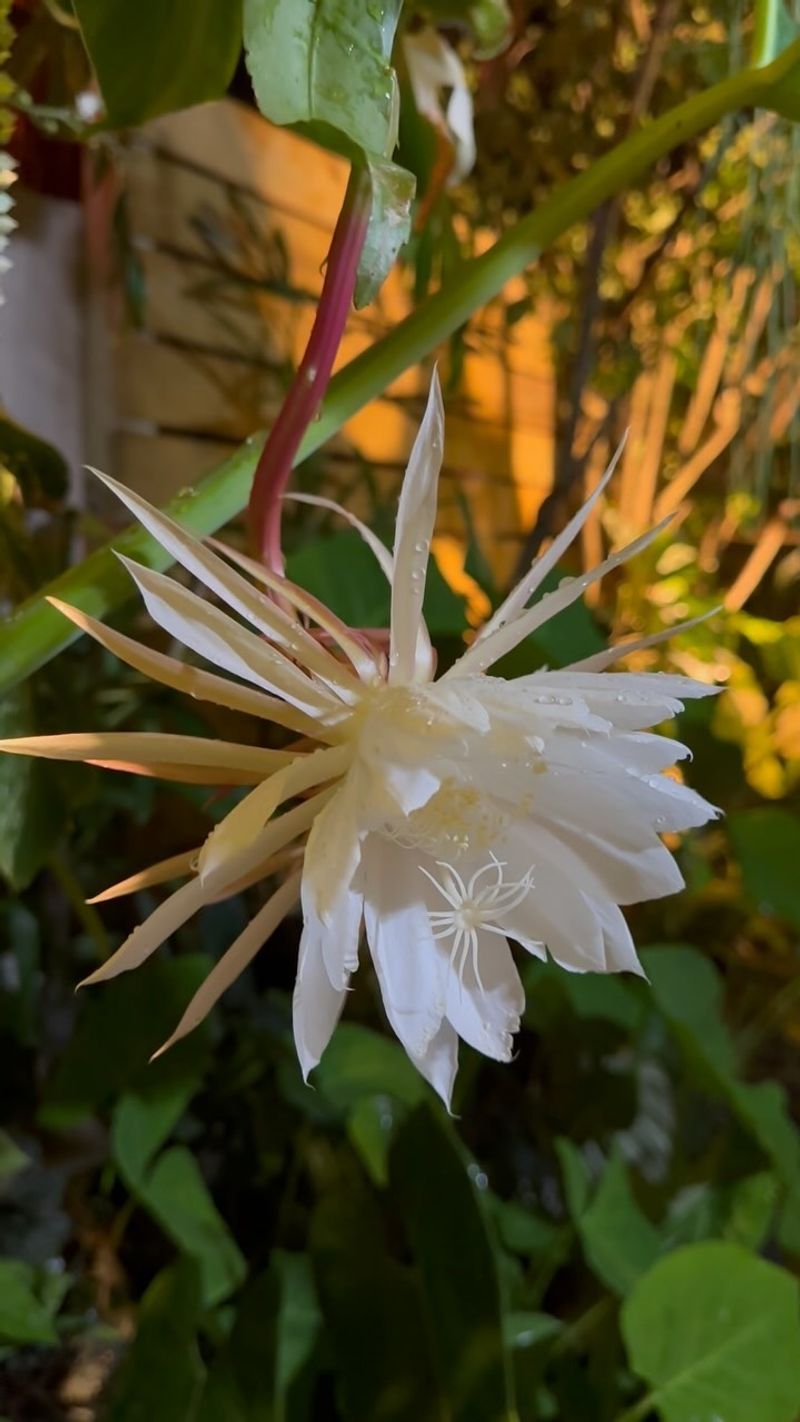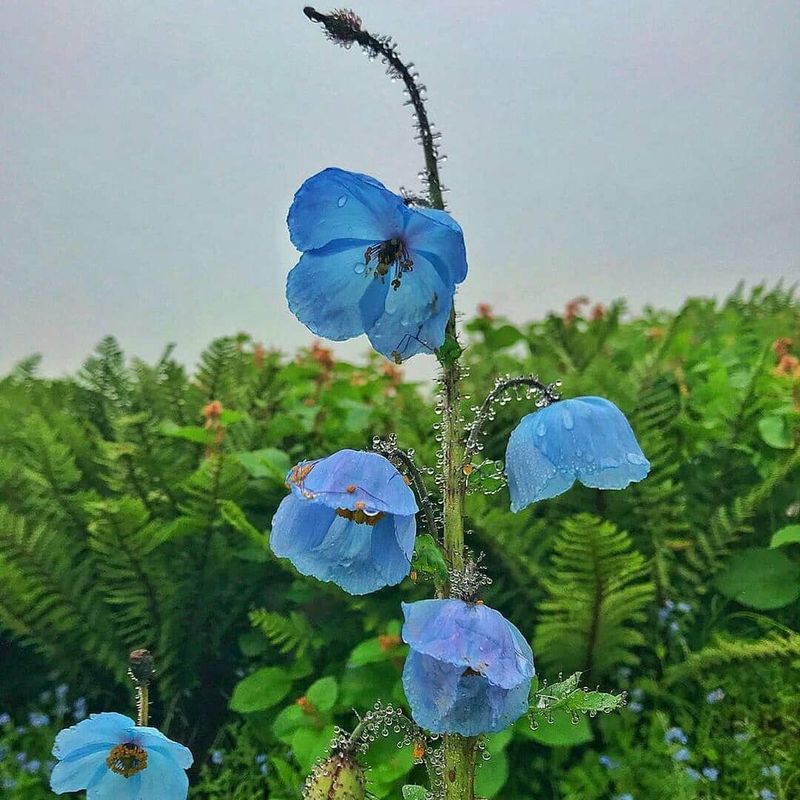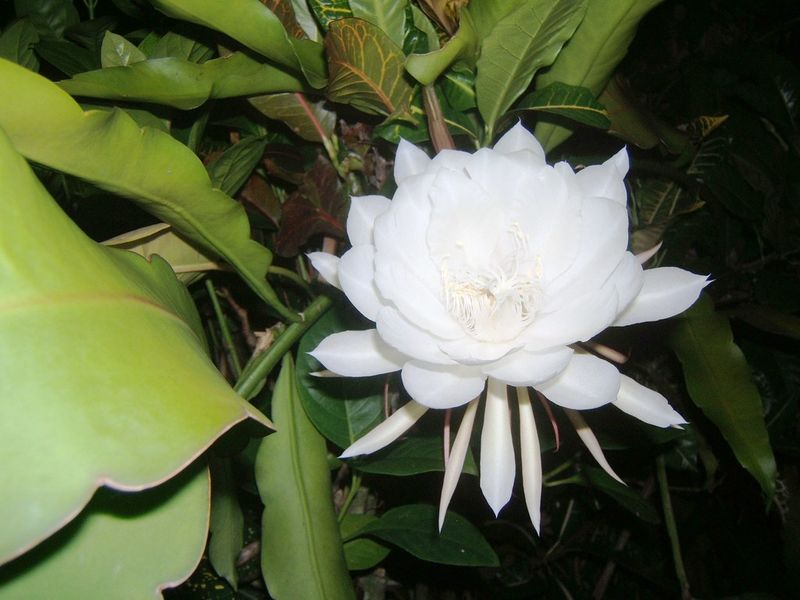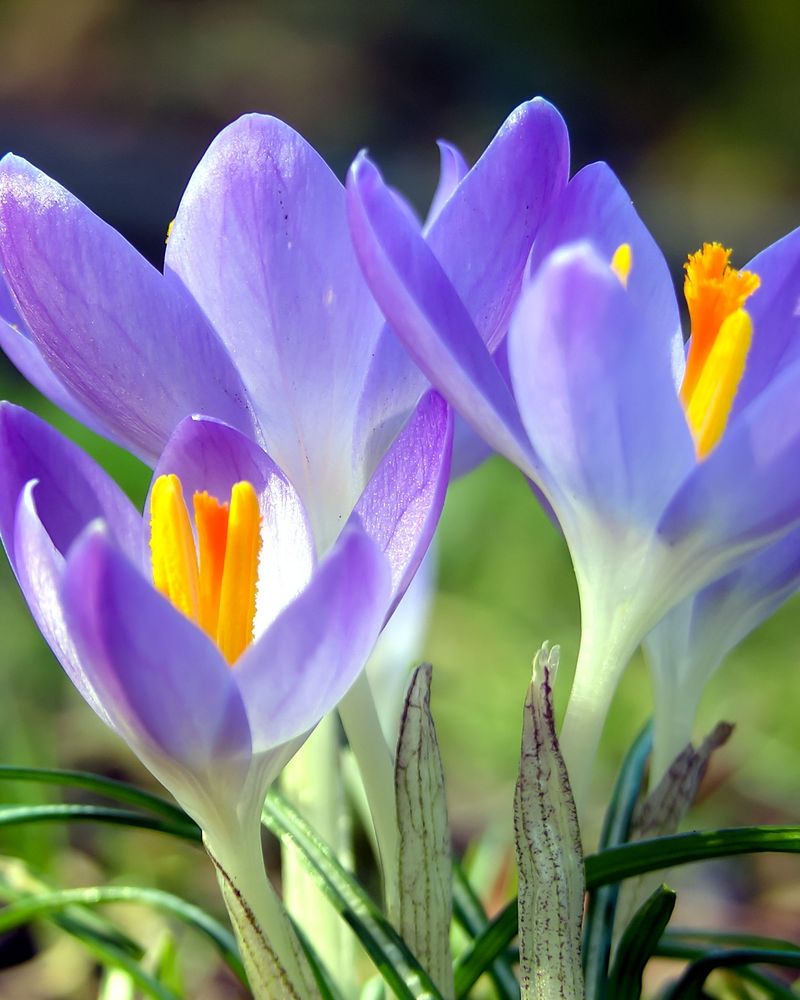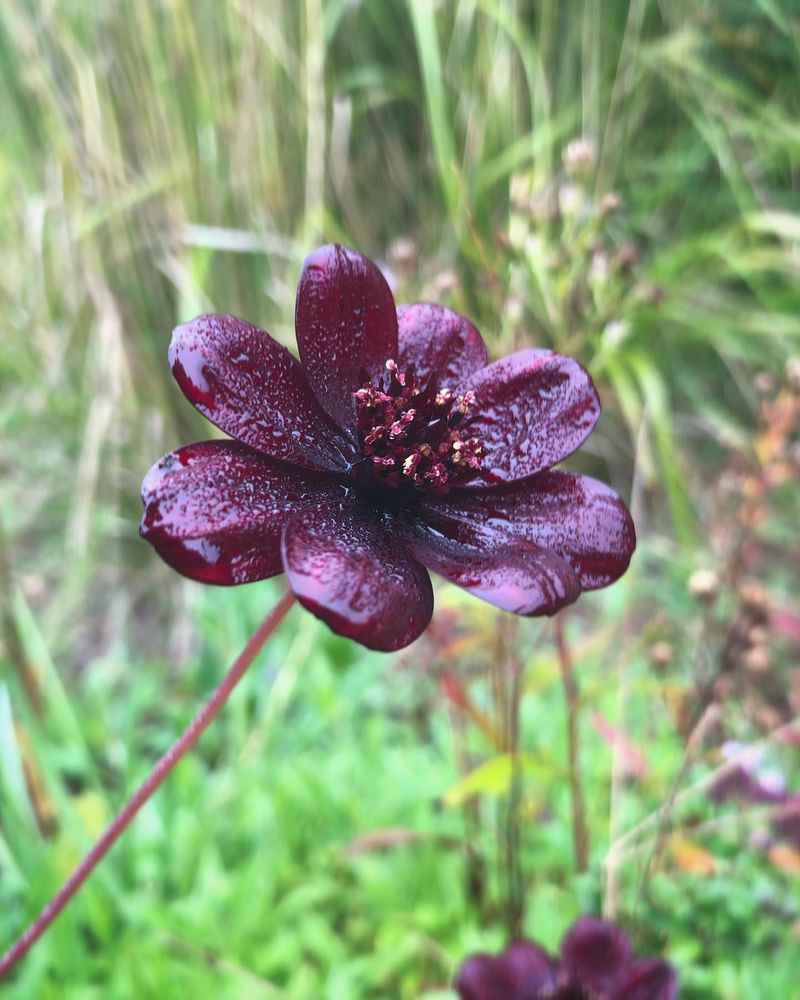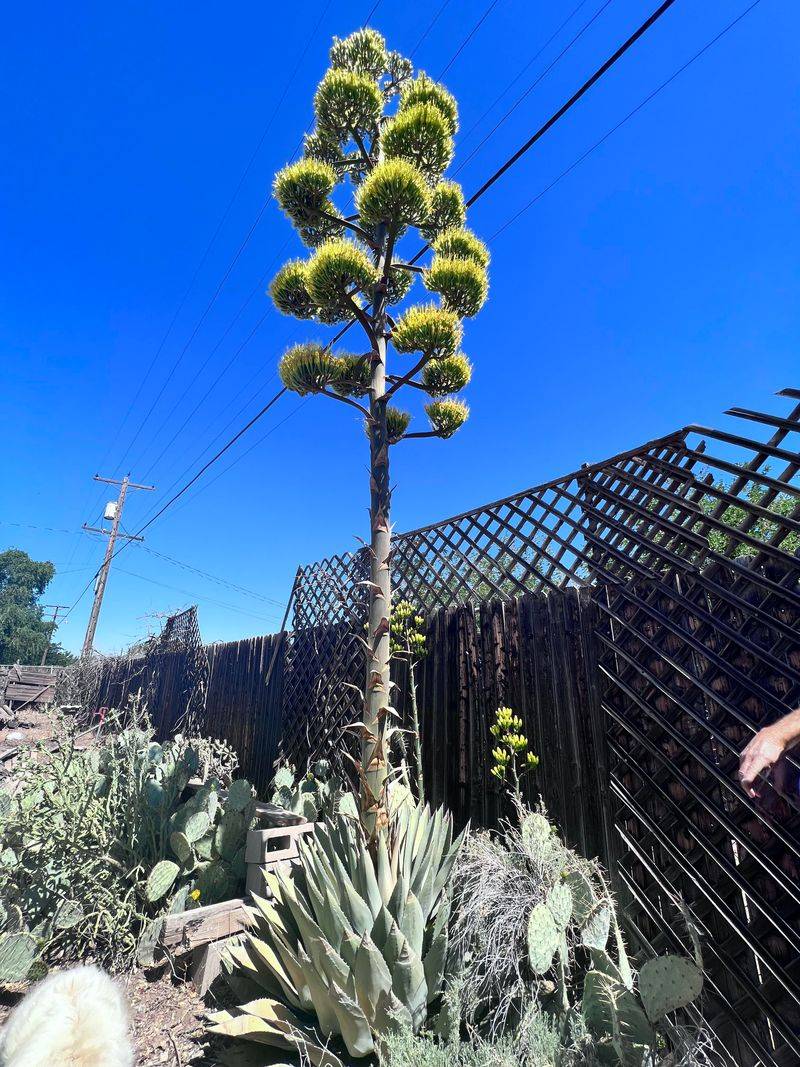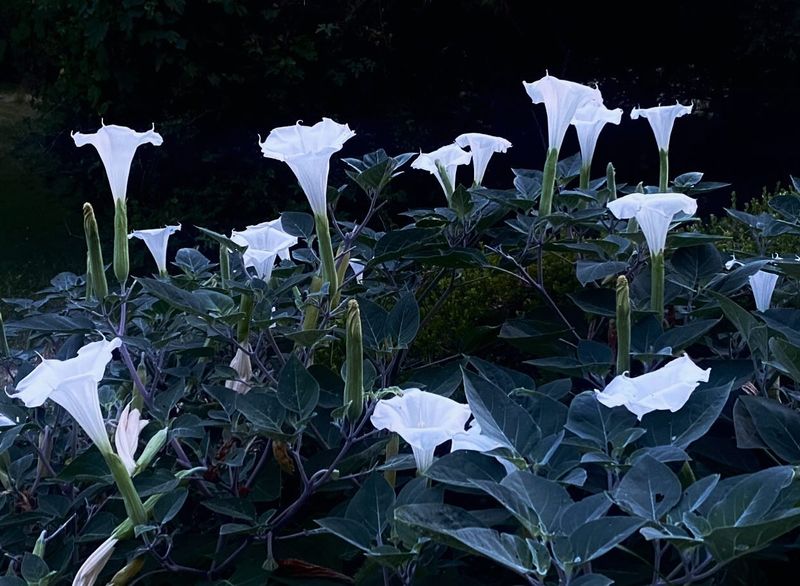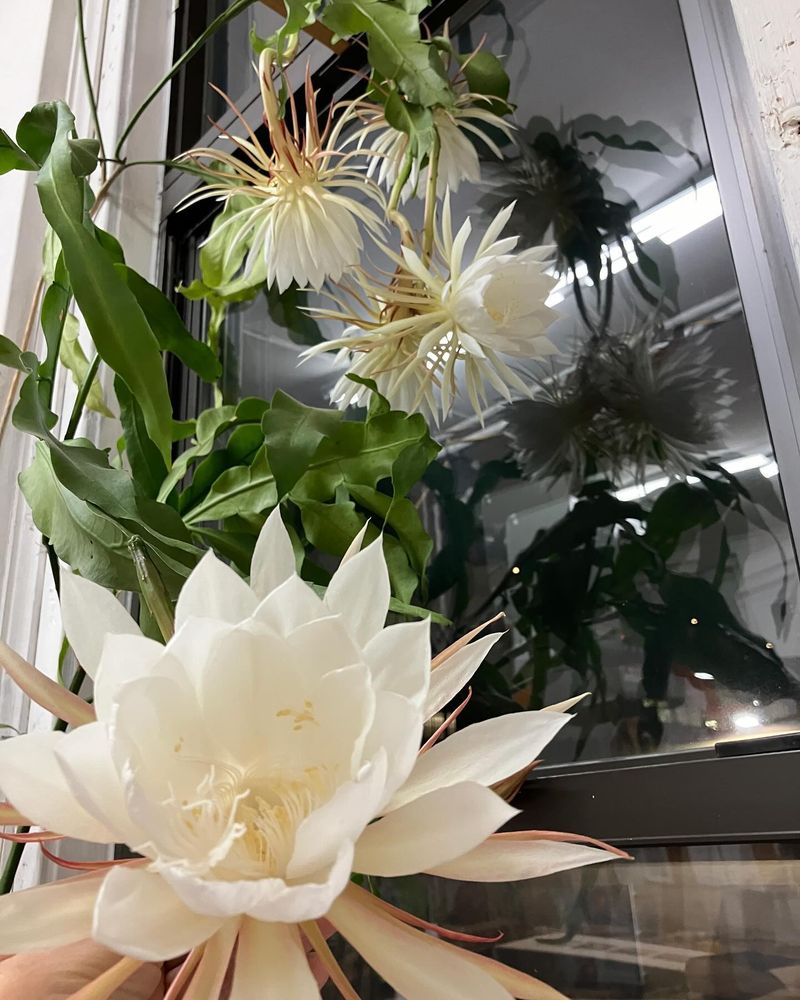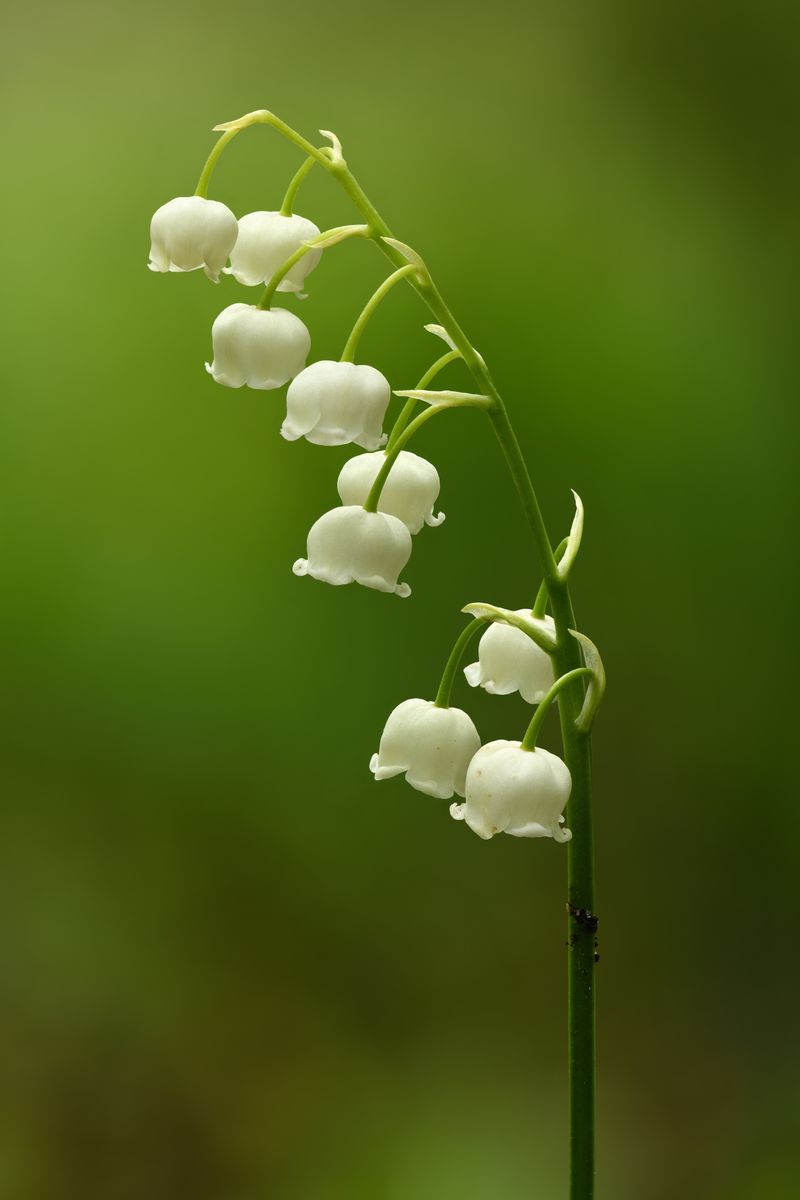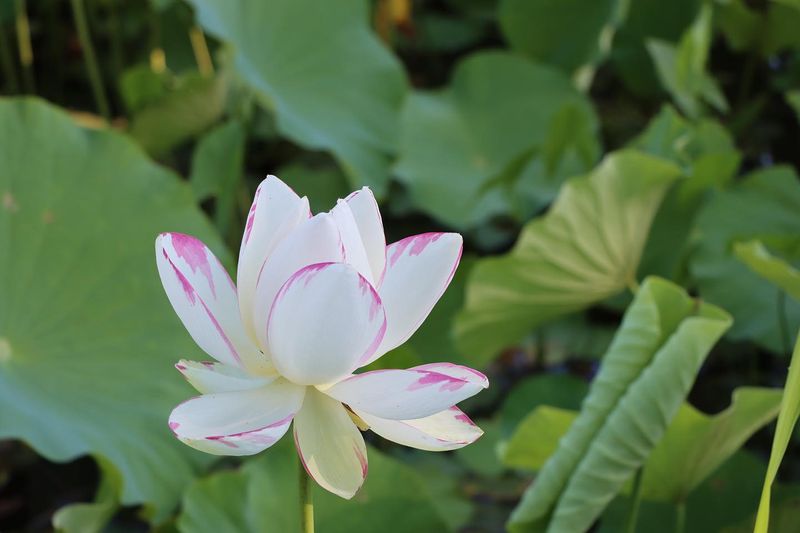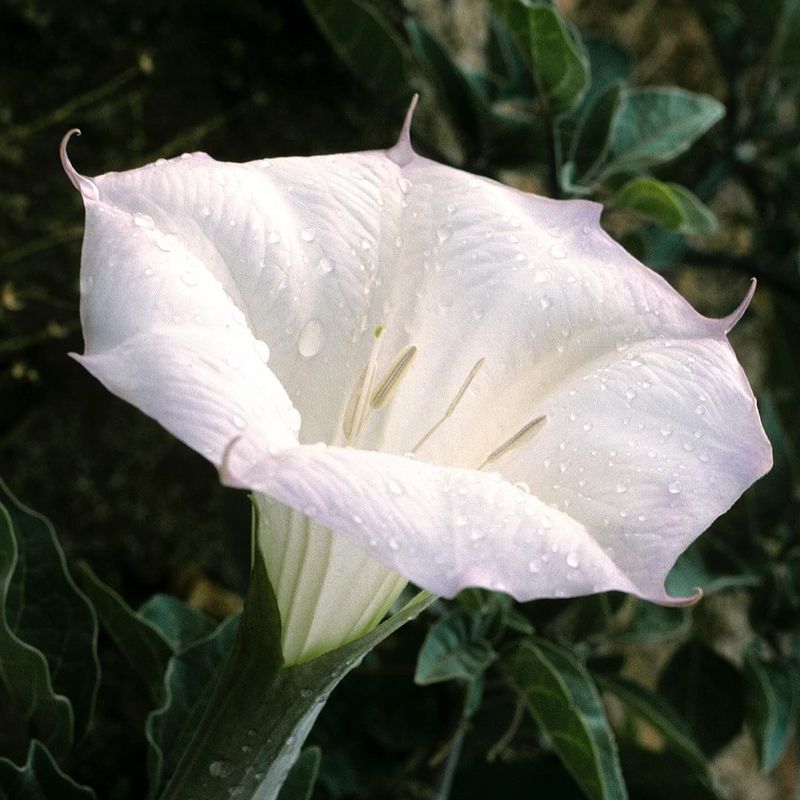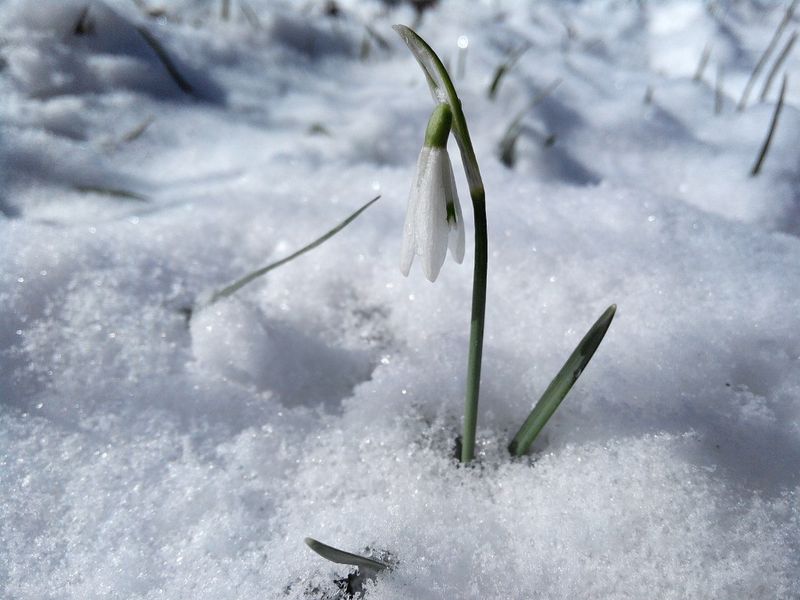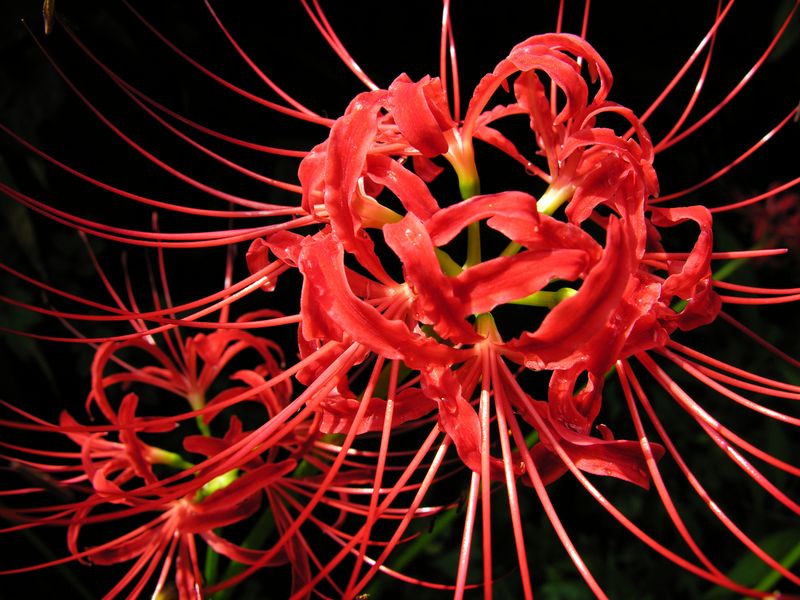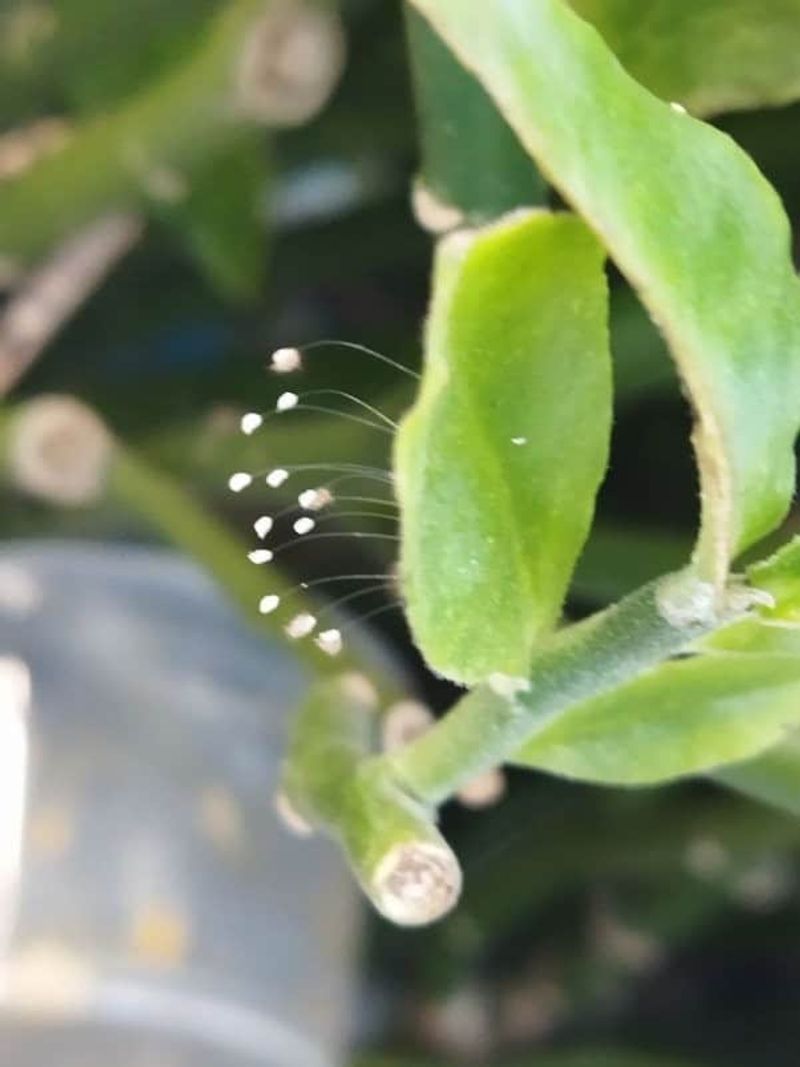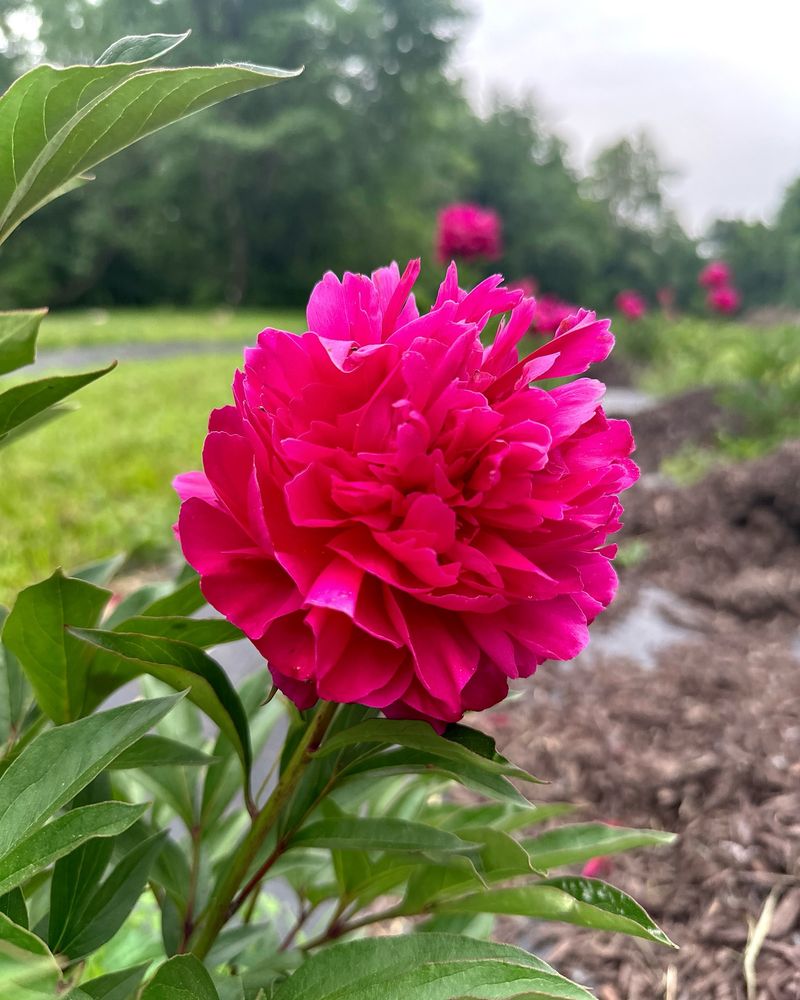Blink and you’ll miss them. These fleeting floral wonders don’t stick around long, but when they do, they steal the show.
Like a flash in the pan or a shooting star, these 18 blooms prove that sometimes the shortest stories leave the deepest roots. Ready to chase some beauty while it lasts?
1. Cherry Blossoms
Delicate pink and white clouds transform Japan’s landscape each spring during hanami season. Cherry blossoms bloom for just 7-10 days, creating breathtaking canopies that draw thousands of visitors.
Ancient Japanese tradition celebrates these ephemeral blooms as symbols of life’s beauty and impermanence. Their brief flowering period serves as a reminder to appreciate fleeting moments.
For centuries, families have gathered beneath these trees for picnics and poetry, honoring a tradition that continues today worldwide.
2. Corpse Flower
The botanical world’s most dramatic performer, Amorphophallus titanum, emerges once every 7-10 years for a brief 24-48 hour spectacle. Standing up to 10 feet tall, this Indonesian native produces the world’s largest unbranched inflorescence.
Its notorious smell—resembling rotting flesh—attracts pollinating insects during its brief bloom. Botanical gardens worldwide announce these rare events, drawing crowds willing to endure the stench for a glimpse of this botanical marvel.
The entire plant collapses after flowering, returning to dormancy until gathering enough energy to bloom again.
3. Night-Blooming Cereus
Known as “Queen of the Night,” this desert cactus performs its enchanting display for a single evening each year. Large white blossoms unfurl at sunset, releasing an intoxicating vanilla-like fragrance that perfumes the night air.
By morning’s first light, the magnificent flowers wilt and close forever. Native to the American Southwest and parts of Mexico, these plants appear unremarkable most of the year—gangly and thin-stemmed.
Dedicated flower enthusiasts sometimes host midnight viewing parties, gathering friends to witness this botanical phenomenon that transforms an ordinary cactus into something magical.
4. Himalayan Blue Poppy
Gardeners consider the sky-blue Meconopsis their ultimate challenge. These poppies display their stunning azure petals for merely two weeks in late spring, requiring precise growing conditions of cool temperatures and partial shade.
Native to the high elevations of Tibet and surrounding mountains, they struggle in warmer climates. Their delicate tissue-paper blooms seem almost unreal—a blue so pure it appears backlit.
Victorian plant hunters risked their lives discovering these treasures, bringing seeds back to Europe where they became prized specimens in specialized gardens capable of meeting their demanding needs.
5. Kadupul Flower
Considered the world’s rarest flower, this mysterious Sri Lankan cactus blooms only at midnight and withers before dawn. Its fragrant white blossoms cannot be picked or purchased at any price, making it truly priceless.
Buddhist traditions regard the Kadupul as sacred, believing it descends from heaven to bless the earth. Photographers wait patiently through the night to capture its ephemeral beauty.
The plant grows on trees rather than in soil, drawing nutrients from air and rain. Its fleeting nature has made it a symbol of impermanence in Eastern philosophy.
6. Spring Crocus
Often pushing through late winter snow, these brave harbingers of spring bloom for just 1-2 weeks. Their purple, yellow, and white cups open wide on sunny days, closing tight each evening to protect delicate stamens.
Ancient Greeks and Romans prized certain crocus species for producing saffron, the world’s most expensive spice. Just three red stigmas from each flower are harvested by hand, explaining saffron’s precious status.
Squirrels and mice frequently dig up and relocate the bulbs, creating surprise patches of color in unexpected garden spots each spring.
7. Chocolate Cosmos
Velvety dark red-brown flowers emit a genuine chocolate vanilla scent during their brief summer blooming period. Originally from Mexico, all chocolate cosmos today descend from a single clone—the original species went extinct in the wild.
Each flower lasts just one day, opening in morning and closing by evening. The richly colored blooms appear almost black in certain light, creating dramatic garden contrast.
Pollinators become nearly intoxicated by their sweet fragrance, which grows strongest in afternoon heat. Garden visitors often lean in for a sniff, surprised by the authentic cocoa aroma.
8. Century Plant
Despite its misleading name, this dramatic succulent blooms after 10-30 years—not a century—but flowers just once before dying. When ready, it produces a massive asparagus-like stalk that grows up to 40 feet tall in mere weeks.
Hundreds of yellow-green flowers cluster atop this giant structure, attracting hummingbirds and bats. Native to Mexico and the American Southwest, these plants channel all their stored energy into this spectacular final act.
After flowering, the entire plant slowly dies, leaving behind small clones at its base. Indigenous peoples used its fibers for rope and needles, making practical use of this dramatic plant.
9. Magnolia Blossoms
Appearing before their leaves emerge, magnolia flowers create spectacular displays on bare branches for just 2-3 weeks each spring. Their large, fragrant blooms in shades of white, pink, and purple have evolved unchanged for millions of years.
Fossil records show magnolias existed before bees, evolving to be pollinated by beetles instead. Late frosts often threaten these early bloomers, turning their delicate petals brown overnight.
Southern plantations and gardens showcase ancient specimens, some trees living over 100 years while producing their brief but magnificent annual displays.
10. Moonflower
As twilight descends, these dramatic white trumpet flowers unfurl in a mesmerizing time-lapse worthy display. Each bloom lasts just a single night, opening fully within minutes as evening approaches.
Their intense sweet fragrance attracts sphinx moths with long proboscises perfectly evolved to reach deep nectar. Growing on twining vines that can reach 15 feet, moonflowers create enchanting night gardens.
Victorian evening gardens featured these blossoms for moonlight strolls, their white petals seeming to glow in darkness. Morning reveals tightly closed spent blooms, while new buds prepare for the next evening’s performance.
11. Epiphyllum Oxypetalum
Commonly called “Queen of the Night,” this tropical cactus produces spectacular foot-long blooms that open for a single night each year. The flower’s unfurling process begins at sunset, reaching full bloom around midnight, then wilting permanently by sunrise.
Its powerful vanilla-like fragrance fills entire gardens, evolved to attract night-flying moth pollinators. Native to Mexico and South America, these plants grow as epiphytes, clinging to trees rather than growing in soil.
Families sometimes pass these plants through generations, with grandparents waking grandchildren to witness the rare midnight blooming event.
12. Lily of the Valley
Tiny bell-shaped flowers with an intoxicating sweet fragrance emerge for just 3-4 weeks in spring. Despite their delicate appearance, these woodland plants contain potent cardiac glycosides, making all parts highly poisonous.
Their scent has inspired countless perfumes, though no artificial recreation fully captures their complex fragrance. Christian legend claims these flowers sprang from Mary’s tears at the crucifixion, explaining their pure white color.
French tradition celebrates May 1st by exchanging small bouquets as good luck tokens. Once established, their underground rhizomes spread vigorously, creating expanding colonies of these ephemeral blooms.
13. Lotus Flower
Sacred in many Eastern religions, lotus flowers open at sunrise and close at sunset, blooming for just 3-5 days. Each flower emerges from muddy water perfectly clean, rising above the surface to open immaculate pink or white petals.
This daily cycle of opening and closing has made lotus blossoms powerful symbols of rebirth and spiritual awakening. Seeds discovered in ancient lake beds have germinated after 1,000+ years, demonstrating remarkable longevity.
Every part of the plant serves practical purposes in traditional Asian cultures—roots and seeds for food, leaves for wrapping, and petals for medicine.
14. Datura
Mysterious trumpet-shaped flowers unfurl at dusk, releasing an intoxicating fragrance that intensifies throughout the night. Each bloom lasts just 24 hours before withering away, regardless of whether pollination occurs.
Also called moonflower or devil’s trumpet, all parts contain dangerous hallucinogenic compounds. Many cultures incorporated datura into shamanic and religious practices despite its toxicity.
Moths with extraordinarily long proboscises evolved specifically to reach the deep nectar of these flowers, hovering like miniature hummingbirds during pollination. Georgia O’Keeffe famously painted these dramatic blooms, capturing their mysterious allure.
15. Snowdrop
Brave little nodding white flowers often push through snow, blooming for just 2-3 weeks in late winter. Their appearance signals winter’s end when few other plants dare to flower.
Containing compounds that may help treat Alzheimer’s disease, these seemingly fragile plants possess remarkable strength. Bulbs contain natural antifreeze compounds allowing them to survive freezing temperatures.
British folklore considers bringing snowdrops indoors bad luck, claiming they bring death into the house. Their Latin name Galanthus means “milk flower,” referring to their pure white color that stands out against winter’s bleakness.
16. Spider Lily
Appearing suddenly after heavy rain, spider lilies burst from bare ground without leaves, blooming for just 7-10 days. Their spidery red petals with long stamens create dramatic displays along riverbanks and rice field edges throughout Japan and China.
Known as higanbana in Japan, they’re associated with death and the afterlife, often planted around cemeteries. Legend claims they guide souls to their next reincarnation.
Bulbs contain toxic lycorine, deterring animals from digging them up. Entire fields transform overnight when thousands bloom simultaneously, creating rivers of red that vanish just as quickly.
17. Youtan Poluo
According to Buddhist legend, this microscopic flower blooms once every 3,000 years, symbolizing extraordinary rarity. Modern specimens appearing on Buddha statues measure just 1mm across, requiring magnification to view their star-shaped structure.
Scientists debate whether these are actually flowers or a type of fungus. Their appearance is considered an auspicious sign in Buddhist traditions, supposedly heralding the arrival of a great sage.
First documented in Korean temples during the 1990s, these mysterious blooms have since been reported worldwide. Their true nature remains partially unexplained, adding to their mystical reputation.
18. Peonies
Lush, fragrant blooms have been cultivated for over 2,000 years in China, where they’re considered the king of flowers. Despite months of anticipation, each magnificent flower lasts just 7-10 days before dropping its silky petals.
Ancient Chinese imperial gardens featured rare varieties worth more than gold. Ants play a crucial role in peony blooming, helping to open the nectar-sealed buds by feeding on their sweet secretions.
Traditional Chinese medicine utilizes peony roots for their anti-inflammatory properties. Paintings and poetry celebrating these short-lived blooms date back to the Tang Dynasty.

